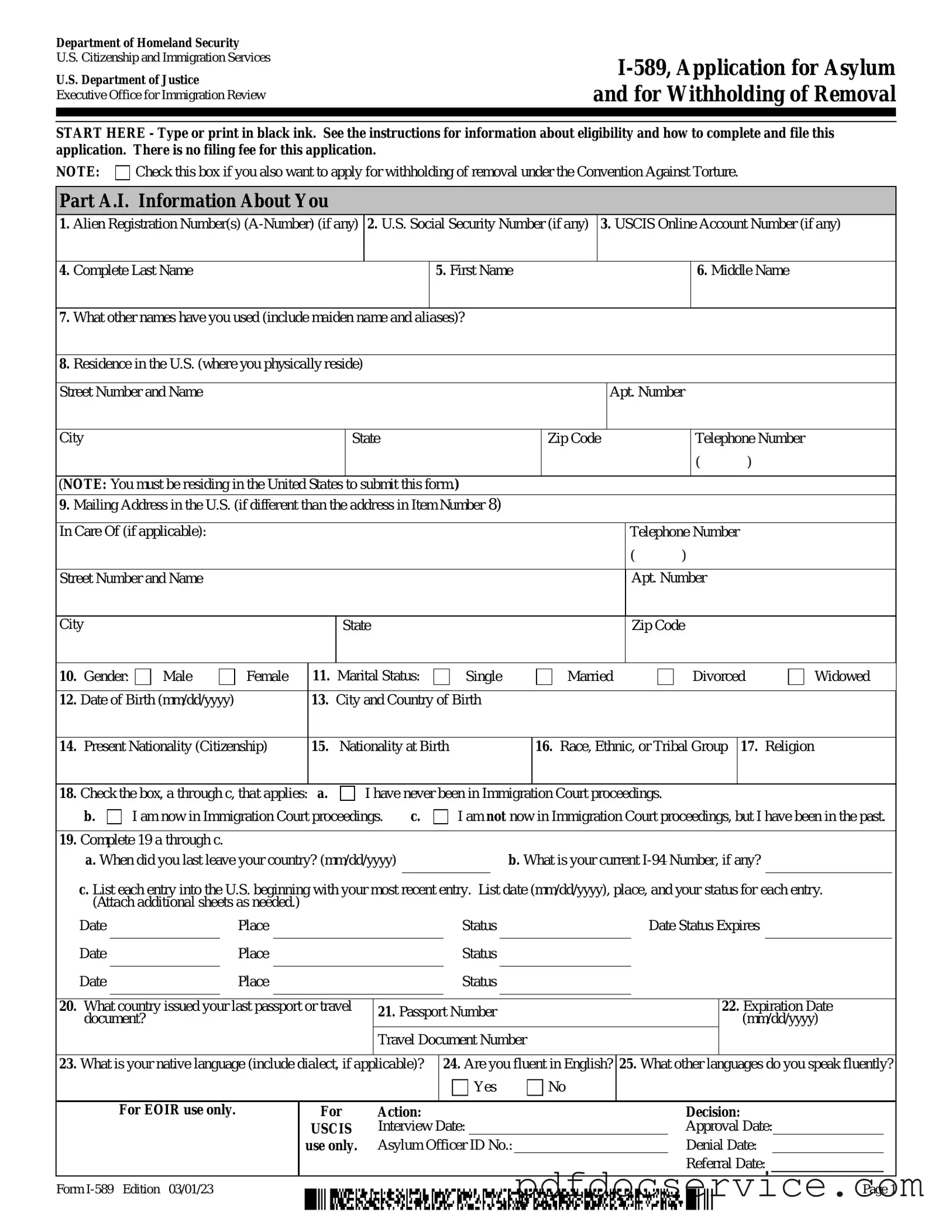The USCIS I-589 form is an application for asylum and for withholding of removal. It is used by individuals in the United States who are seeking protection from persecution in their home country. This form allows applicants to explain their reasons for seeking asylum and to provide evidence supporting their claims.
Any individual who is physically present in the United States and fears persecution in their home country can file the I-589 form. This includes people from various backgrounds, such as refugees, immigrants, or those on temporary visas. It is important to file the form within one year of arriving in the U.S., although there are some exceptions to this rule.
The I-589 form requires detailed personal information, including:
-
Your name and contact information
-
Your country of origin
-
Details about the persecution you fear
-
Information about your family members
-
Any previous immigration applications or petitions
Providing accurate and comprehensive information is crucial for the success of your application.
You can submit the I-589 form either by mail or online, depending on your circumstances. If you are submitting by mail, make sure to send it to the correct USCIS address based on your location. If you choose to file online, you will need to create an account on the USCIS website. Ensure that you keep a copy of the completed form for your records.
After submission, USCIS will review your application. You may receive a notice for a biometrics appointment, where your fingerprints will be taken. Following this, you will be scheduled for an interview with an asylum officer. During the interview, you will present your case and provide any additional evidence. It is essential to prepare thoroughly for this interview.
Can I appeal if my I-589 application is denied?
If your application for asylum is denied, you may have the option to appeal the decision. You can file an appeal with the Board of Immigration Appeals (BIA) within 30 days of the denial notice. It is advisable to seek legal assistance during this process to improve your chances of a successful appeal.
